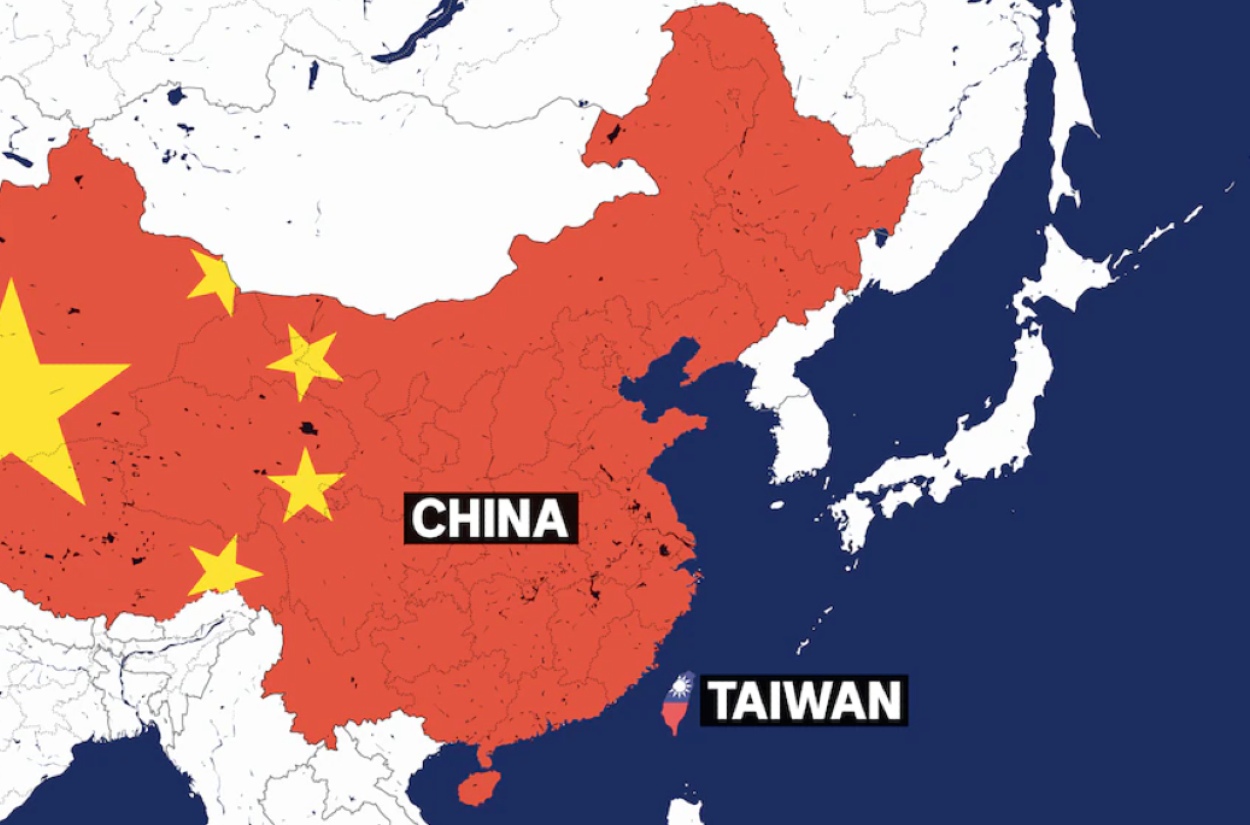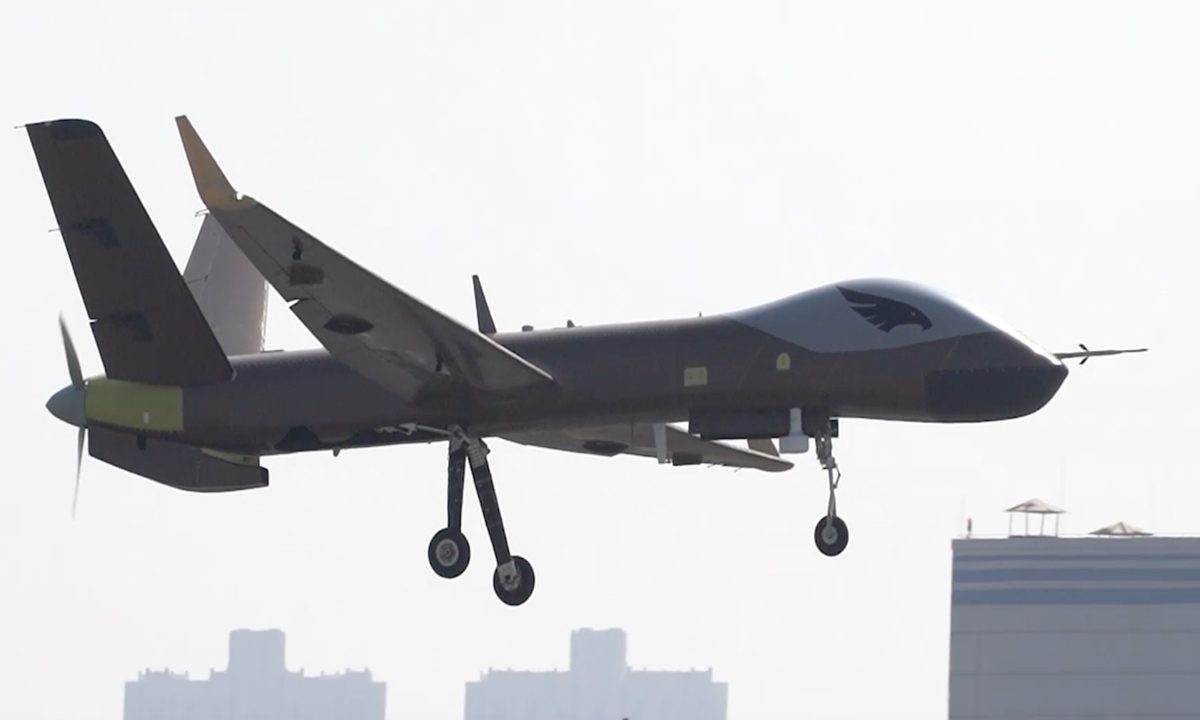After swamping the global drone market, China is taking giant technological strides in the qualitative development of UAVs. The People’s Liberation Army-Air Force (PLAAF) is reportedly adding artificial intelligence (AI) to its latest generation of armed drones and fighter jets.
The Chinese-government-backed news organization Global Times confirmed that the domestically developed Wing Loong unmanned systems will become “more intelligent” and thus expand their envelope of applications.
Quoting the Chief Designer at Aviation Industry Corporation of China (AVIC), Li Yidong, the report added: “In the future, the drones will integrate with new technologies including 5G+, industrial internet, artificial intelligence, and big data, and promote more highly efficient applications in more fields together with the whole industrial chain, such as scientific investigation, mapping, and logistics.”
An expert quoted in the report indicates that the “intelligentization” of future drones will aid in target recognition, situational awareness, mission planning and autonomous flight or even intelligent maintenance.
In 2020, the PLA added a new milestone for modernization to be achieved by 2027 – to accelerate the integrated development of “mechanization, informatization and intelligentization” of its armed forces.
The Pentagon’s 2023 Military and Security Developments Involving the People’s Republic of China says that if realized, it could give the PLA capabilities to be a more credible military tool for the CCP’s Taiwan unification efforts.
China has a growing collection or family of Wing Loong drones spanning a wide operational envelope, including a US Reaper or Gray Eagle type of armed drone. Among the more recent variants are the Wing Loong – 1E mostly made of composite materials for more endurance, speed, and dwell time, and a cutting-edge “intercontinental” Wing Loong 3 drone unveiled last year.
Most recently, China conducted its largest-ever emergency rescue aviation exercise, demonstrating the use of several unmanned aircraft in emergency scenarios. The Chinese state media elucidated the important role a Wing Loong-1E drone played during the exercise.
The Wing Loong-1E drone boasts an impressive endurance of 45 hours, allowing for extended operational periods and a maximum range of 7,000 kilometers, ensuring its capability to cover substantial distances. Even when positioned at a high-altitude airport that is 4,000 meters above sea level, the Wing Loong 1E can take off and land under the most demanding external payload conditions.
In comparison, the US Gray Eagle can perform a full range of missions including aerial surveillance as well as armed attack; the drone operates electro-optical and infrared sensors, synthetic aperture radar, and four HELLFIRE missiles.
“The MQ-1C Gray Eagle has a maximum gross take-off weight of 1,633 kilograms, a fuel capacity of 261 kilograms, an internal payload capacity of 261 kilograms and an external payload capacity of 227 kilograms, with a service ceiling of 8,839.2 meters, a maximum endurance of 25 hours and speed of 309 kilometers an hour, according to the website of its maker, General Atomics Aeronautical Systems,” the Global Times says.
Unlike its predecessor, the Predator, the Gray Eagle relies upon a heavy fuel engine to offer increased horsepower and improved fuel efficiency.
The Chinese have been trying to make a drone comparable to Grey Eagle, but their ambition is only restricted by their handicap in engine technology.
China has been aggressively trying to replicate the US’s success in integrating AI and its application to drone operations and aerial combat. The US Air Force has, for example, made breakthrough progress in its long-standing “Loyal Wingman” concept wherein manned fighter jets “network” with nearby drones or even groups of drones to share data or execute missions.
Taking A Cue From US Manned-Unmanned Teaming
The manned-unmanned teaming is developed under Project Carrera. Lockheed Martin calls it a “human-centric” design that is receiving particular attention, emphasizing ease of control and interaction with the drones.
The Air Force is ramping up plans for incorporating drone wingmen into its fleet and envisions 1,000 of the so-called collaborative combat aircraft in service. These drones could carry out a variety of missions, including striking targets, intelligence, surveillance and reconnaissance, or electronic warfare.
In recent years, a US Air Force F-22 and F-35 were able to share in-flight data with the service’s Valkyrie drone in a series of experiments. The USAF is also working on sharing the incoming sensor data with other combat platforms.

The loyal wingman is called Collaborating Combat Aircraft (CCA). Each CCA would not have “the full complement of systems that are on a fighter.” Some would carry weapons, some would carry other systems. “One of the things you can do with the CCA concept is select which systems … to carry, which sets of capabilities, you have a modular design.” This also means an enemy has to treat each one as armed because it can be, whether it is or not.
In line with this, the PLA has underscored intelligentization as a leading element of its modernization plans. Beijing is applying its research into AI technologies, such as machine learning and human-machine teaming, to military processes, such as decision-making, to ultimately gain a cognitive advantage in future warfare.
PLA strategists have stated new technologies would enhance the PLA’s capability to process and utilize information at scale and machine speed, allowing decision-makers to plan, operate, and support cross-domain unconventional and asymmetrical fighting on the battlefield. The PLA is researching various applications for AI, including support for missile guidance, target detection and identification, and autonomous systems.
The PLA also considers unmanned systems to be critical intelligentized technology, and is pursuing greater autonomy for unmanned aerial, surface, and underwater vehicles to enable manned and unmanned teaming, swarm attacks, optimized logistic support, and distributed ISR, among other capabilities.

The Chinese efforts are similar to the US Joint All-Domain Command and Control concept, wherein all intelligence input is converged across domains. The real-time data transmission improves the intelligence picture and decreases sensor-to-shooter time.
“The Chinese concept of weaving AI into its fleet of attack drones closely copycat’s the US approach with JADC2, as the Global Times newspaper describes the effort as an “integration” in a JADC2-like conceptual framework,” military expert Kris Osborn said in Maveric Maven.
In another concept similarity, the Global Times report said that the PLA is also exploring the potential of single drones being used in multiple missions by carrying different payloads, including for topographic mapping, environment monitoring, technical tests, target indication, damage assessment, early warning, communications, relaying and networking as well as data service.
- Ritu Sharma has been a journalist for over a decade, writing on defense, foreign affairs, and nuclear technology.
- She can be reached at ritu.sharma (at) mail.com
- Follow EurAsian Times on Google News




